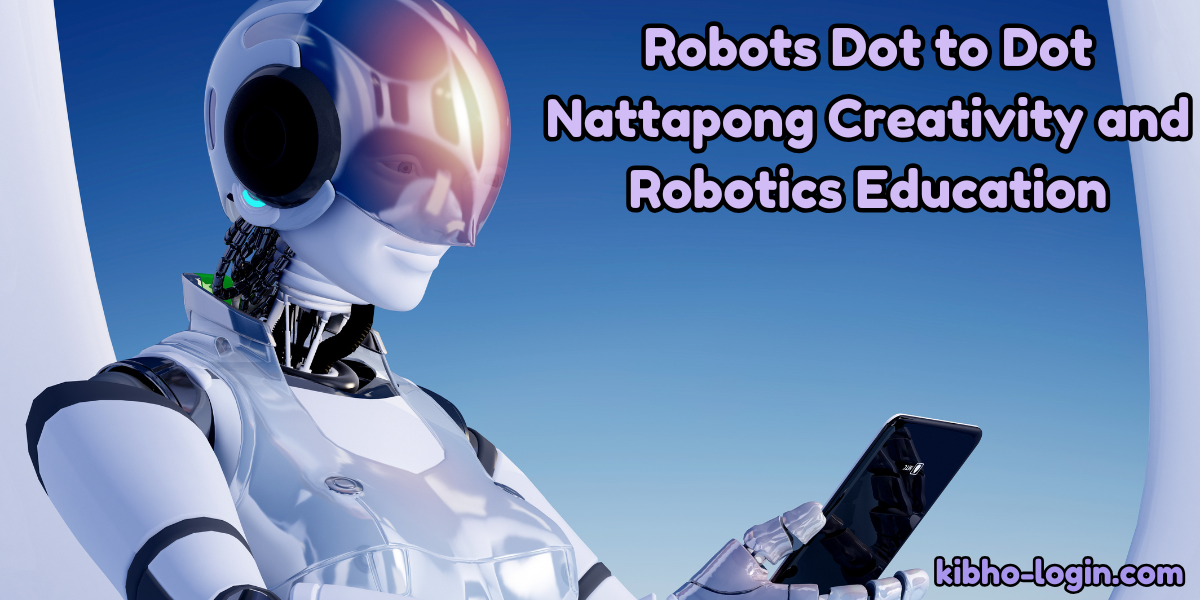In today’s rapidly advancing technological landscape, introducing children to robotics at an early age is crucial. One innovative approach that has gained attention is “Robots Dot to Dot Nattapong,” a method that combines the traditional dot-to-dot puzzle activity with foundational concepts in robotics. This fusion not only makes learning engaging but also lays the groundwork for future exploration in STEM (Science, Technology, Engineering, and Mathematics) fields.
The Concept Behind Robots Dot to Dot Nattapong
At its core, Robots Dot to Dot Nattapong involves connecting numbered dots to form images of robots. While reminiscent of classic dot-to-dot puzzles, this approach is designed to introduce participants to basic robotics concepts in a fun and accessible manner. As learners connect the dots, they gradually reveal intricate robot designs, fostering both creativity and technical understanding.
Read Also: Everything You Need to Know About Zooqle | Fort Sam Houston Golf Course A Complete Guide
Educational Benefits
1. Cognitive Skill Development
Engaging in dot-to-dot activities enhances critical and logical thinking. Following a sequence to complete a puzzle improves problem-solving skills and attention to detail. As children progress to more complex designs, their sequential thinking and pattern recognition abilities are further refined.
2. Fine Motor Skills Enhancement
Connecting dots requires precision and hand-eye coordination. This activity aids in developing fine motor skills, especially in younger children who are still honing their manual dexterity. Such skills are foundational for tasks like designing or assembling robots in the future.
3. Spatial Awareness
Understanding how parts fit into a whole is crucial in robotics. Dot-to-dot puzzles help children practice recognizing shapes, understanding proportions, and visualizing components within a complete system. This spatial thinking is essential when assembling robots or programming their movements.
4. Creativity and Imagination
Beyond logical reasoning, these activities encourage creative expression. As the robot image takes shape, children can add details, colors, or modifications, balancing structured problem-solving with imaginative design. This blend is beneficial for innovation in robotics, where out-of-the-box thinking is often required.
5. Introduction to Basic Robotics Concepts
While seemingly simple, dot-to-dot puzzles can introduce basic ideas about structure and mechanics. By working through robot-themed puzzles, children learn about different robot parts, such as arms, sensors, and wheels, providing a foundation for more advanced robotics education.
Read Also: 24M September Murphy Bloomberg What You Need to Know
Applications Across Various Industries
The principles behind Robots Dot to Dot Nattapong have applications beyond education, influencing various sectors:
| Industry | Application | Benefits |
|---|---|---|
| Manufacturing | Automates tasks like assembly and packaging | Increases efficiency and reduces labor costs |
| Healthcare | Assists in surgical procedures and patient care | Enhances precision and improves outcomes |
| Agriculture | Aids in planting, harvesting, and monitoring crops | Optimizes resource use and boosts yield |
| Logistics | Optimizes warehouse operations and inventory management | Improves efficiency and accuracy in order fulfillment |
Read Also: Invest1Now.com Stocks Your Gateway to Smarter Investments
Challenges and Considerations
While Robots Dot to Dot Nattapong offers numerous benefits, it’s essential to be aware of potential challenges:
- Complexity and Maintenance: Advanced designs may require significant effort to maintain and manage, necessitating specialized training and resources.
- Ethical Considerations: The integration of robotics can raise concerns about employment displacement and privacy issues.
- Safety and Security: Ensuring safe interaction between humans and robots requires robust safety measures and protocols.
- Job Displacement: Automation in various industries may lead to workforce displacement, necessitating retraining and adaptation strategies.
Read Also: If He Had Been with Me Summary A Complete Analysis
Conclusion
Robots Dot to Dot Nattapong is an innovative and engaging way to introduce learners of all ages to the exciting world of robotics. By combining the fun of traditional dot-to-dot puzzles with foundational robotics concepts, this method fosters critical skills such as problem-solving, creativity, fine motor coordination, and spatial awareness.
Beyond its educational benefits, Robots Dot to Dot Nattapong also has the potential to inspire future innovation in fields such as manufacturing, healthcare, agriculture, and logistics. However, as with any technological advancement, it’s important to consider the challenges, such as the need for specialized training and ethical concerns, that come with integrating robotics into various industries.
Incorporating these activities into both educational and therapeutic settings not only makes learning interactive but also prepares individuals for the rapidly evolving landscape of technology. As more people explore the fusion of art and engineering through these puzzles, we can expect an exciting wave of creativity and innovation to emerge, paving the way for a future where robotics plays a key role in shaping our world.
Read Also: 24M September Murphy Bloomberg What You Need to Know
Frequently Asked Questions
Q1: What age group is suitable for Robots Dot to Dot Nattapong activities?
A1: These activities are adaptable for various age groups. Simpler designs are ideal for younger children, while more complex puzzles can challenge older learners and even adults.
Q2: How does Robots Dot to Dot Nattapong integrate with STEM education?
A2: By combining art and design with basic engineering principles, these activities introduce learners to STEM concepts in an engaging and accessible manner.
Q3: Are there digital versions of Robots Dot to Dot Nattapong?
A3: Yes, with technological advancements, digital platforms offer interactive dot-to-dot activities, enhancing the learning experience with animations and immediate feedback.
Q4: Can these activities be used in therapeutic settings?
A4: Absolutely. Dot-to-dot activities can aid in fine motor rehabilitation and provide a calming, focused task for individuals in various therapeutic contexts.
Q5: What materials are needed for Robots Dot to Dot Nattapong?
A5: Traditionally, a printed puzzle and a pencil are sufficient. For digital versions, a tablet or computer with the appropriate software or app is required.
